For children with occupational therapy (OT) needs, bath time can be a daunting experience. Sensory sensitivities, motor challenges, and difficulty with self-care tasks can turn a simple bath into a stressful ordeal. But fear not, parents and caregivers! With a few creative and occupation therapy-based adaptations, you can transform bath time into a fun and empowering experience for your child.
Understanding the Challenges:
Occupational therapists understand the diverse challenges children with OT needs face in the bath. These might include:
Sensory sensitivities: Over-sensitivity to water temperature, touch, or sound can make bathing overwhelming.
Water temperature: Use a thermometer to ensure comfortable bathwater temperature – not too hot or cold. Offer soothing bath salts or essential oils for a calming sensory experience.
Visual comfort: Dim lights or use calming colored lights to reduce visual overwhelm. Play calming music or nature sounds to create a tranquil environment.
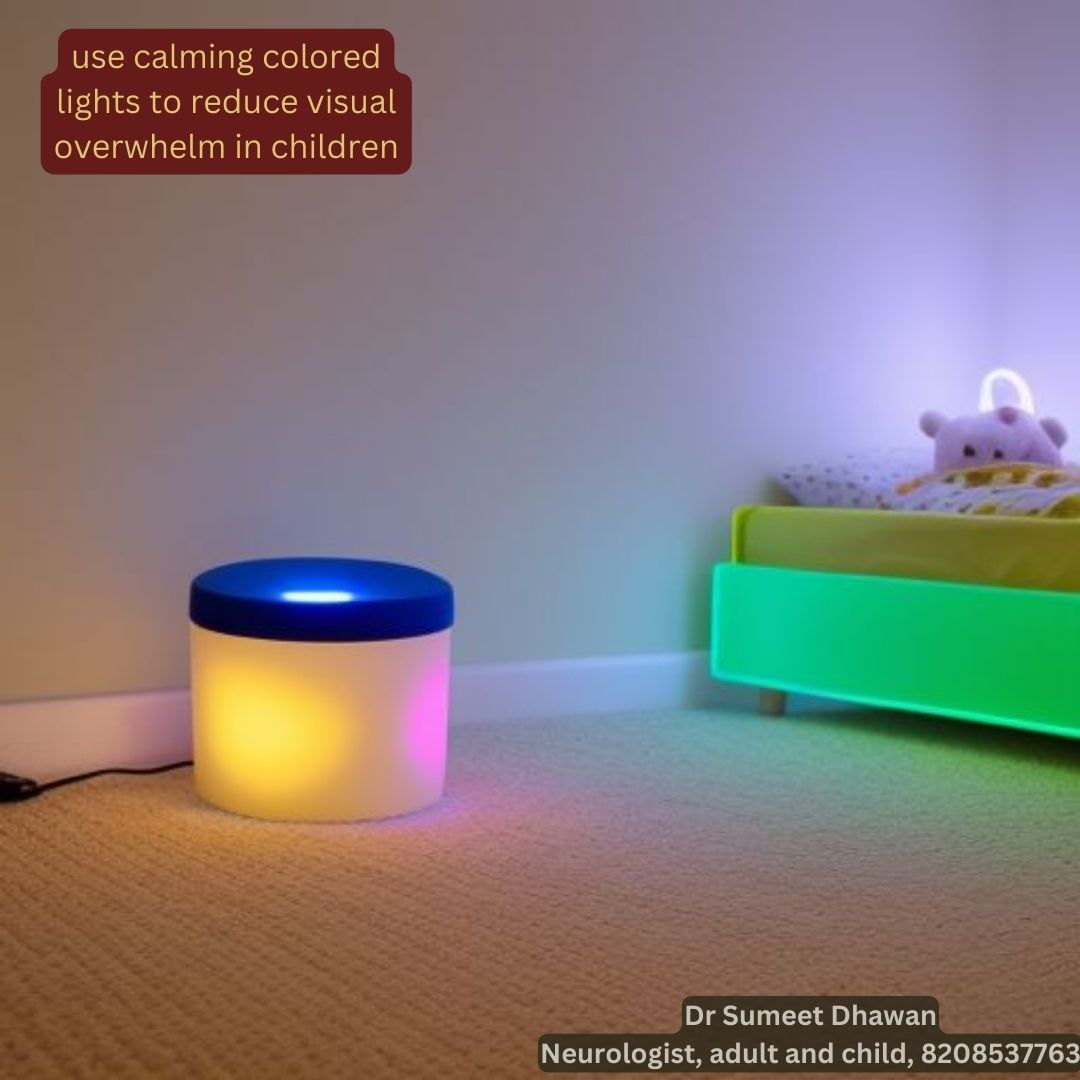
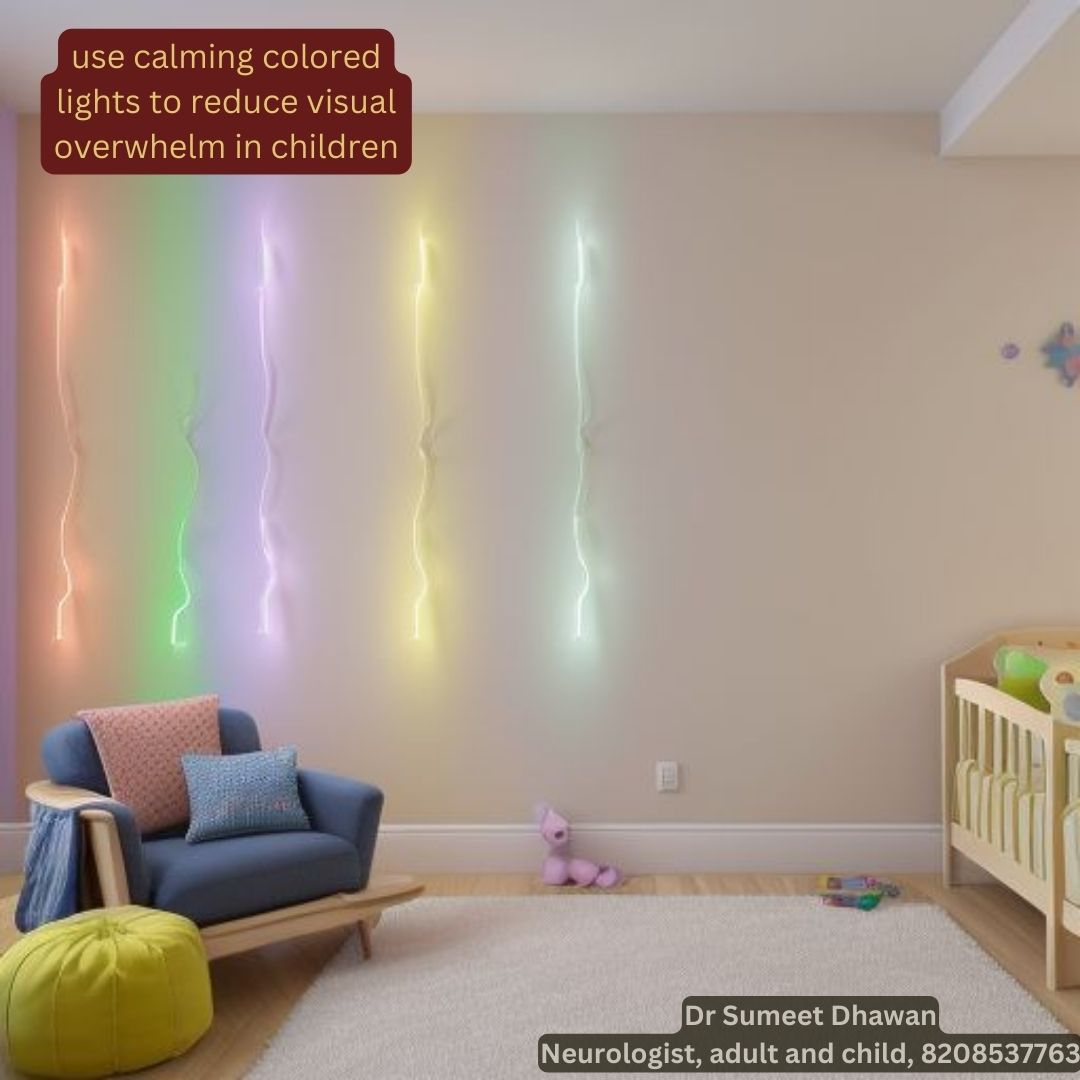
Touch comfort: Offer different textures for washing, like soft washcloths, loofahs, or sponges. Consider using a shower cap if the sensation of shampoo is unpleasant.
Sound sensitivity: Minimize disruptive sounds by turning off unnecessary appliances or using noise-canceling headphones.
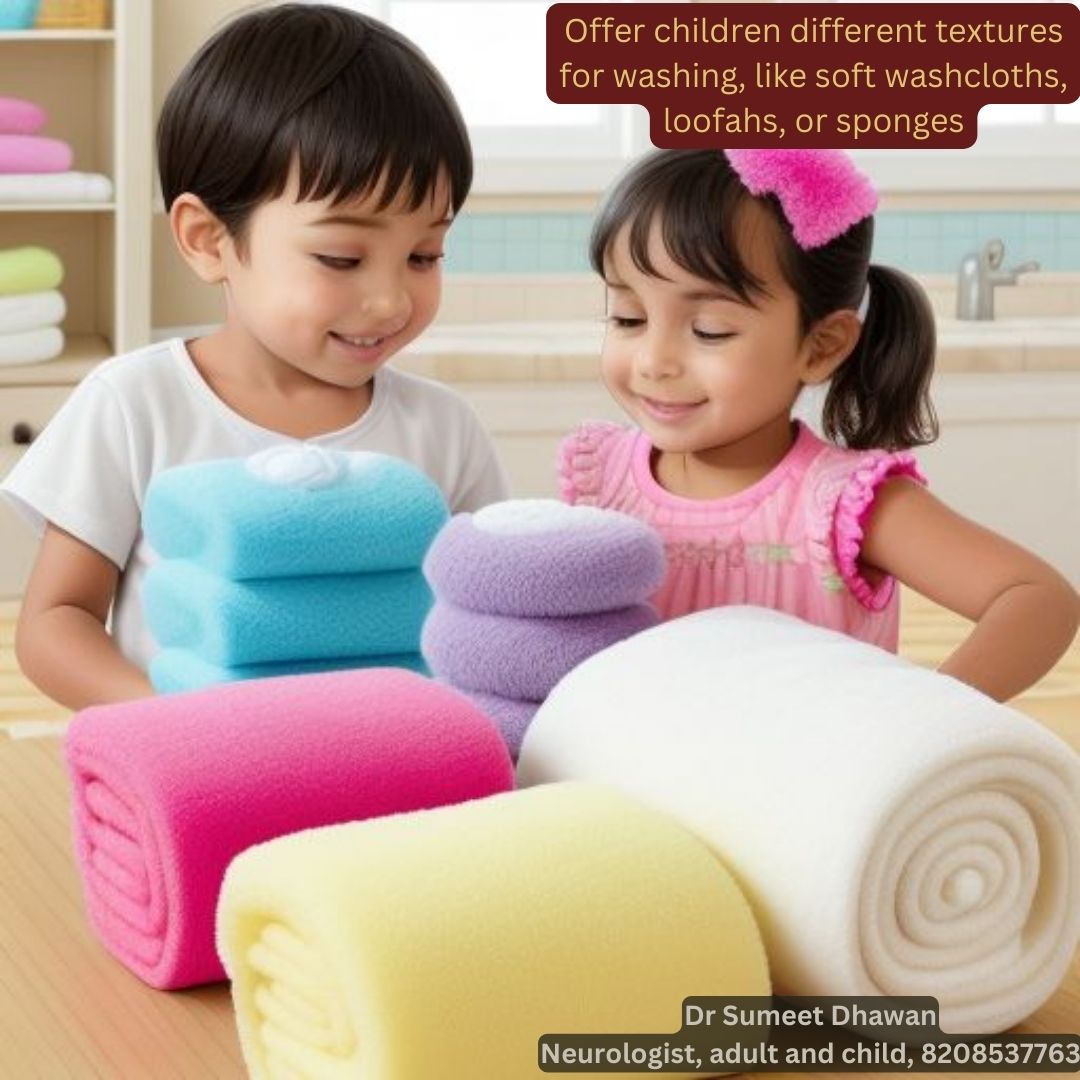
Fine motor skills: Difficulty with tasks like using soap, washing hair, or manipulating washcloths can hinder independence.
Gross motor skills: Challenges with balance, coordination, or transferring from a wheelchair or walker can make getting in and out of the bath risky.



Executive function difficulties: Trouble with planning, sequencing, and initiating tasks can lead to confusion or frustration during bath time.
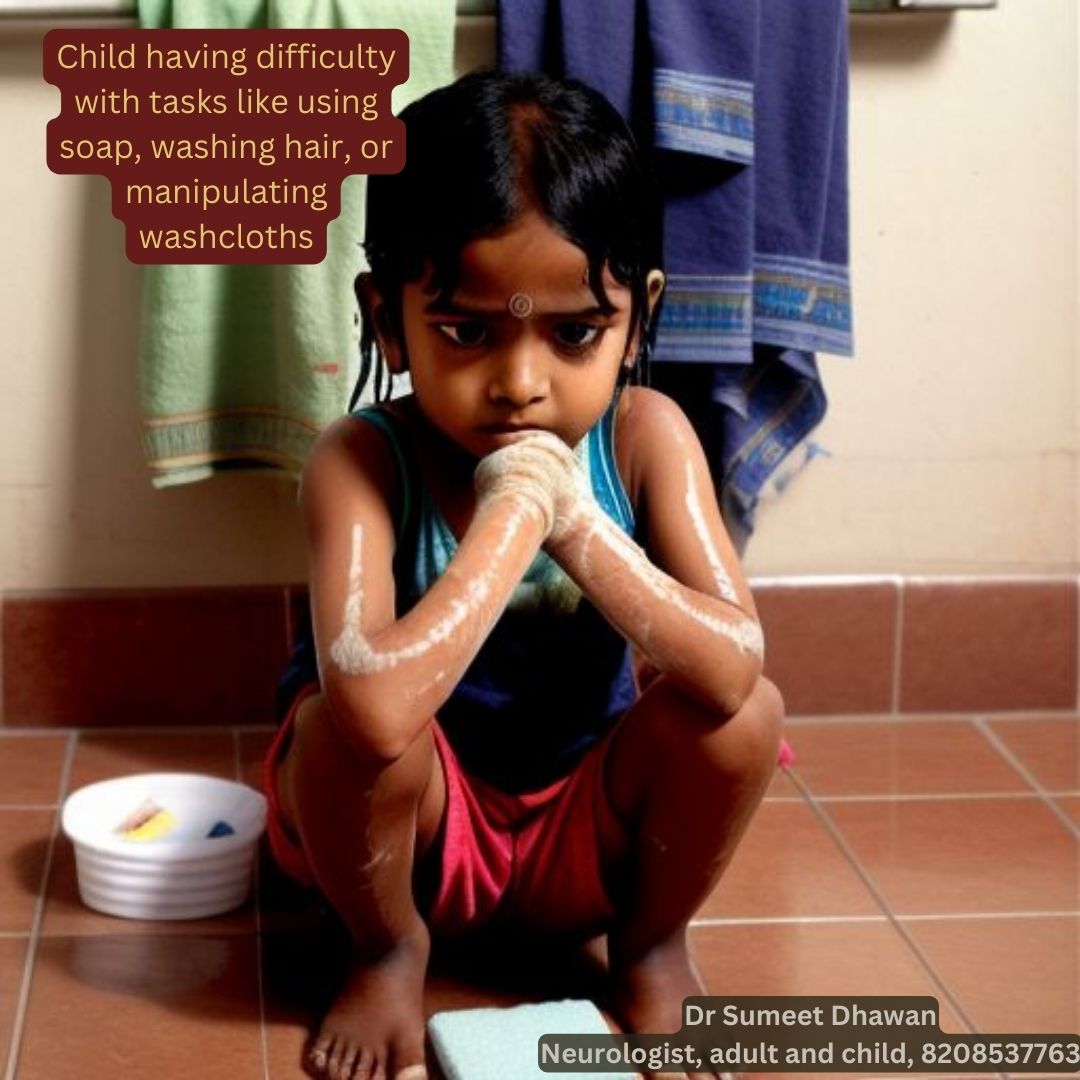
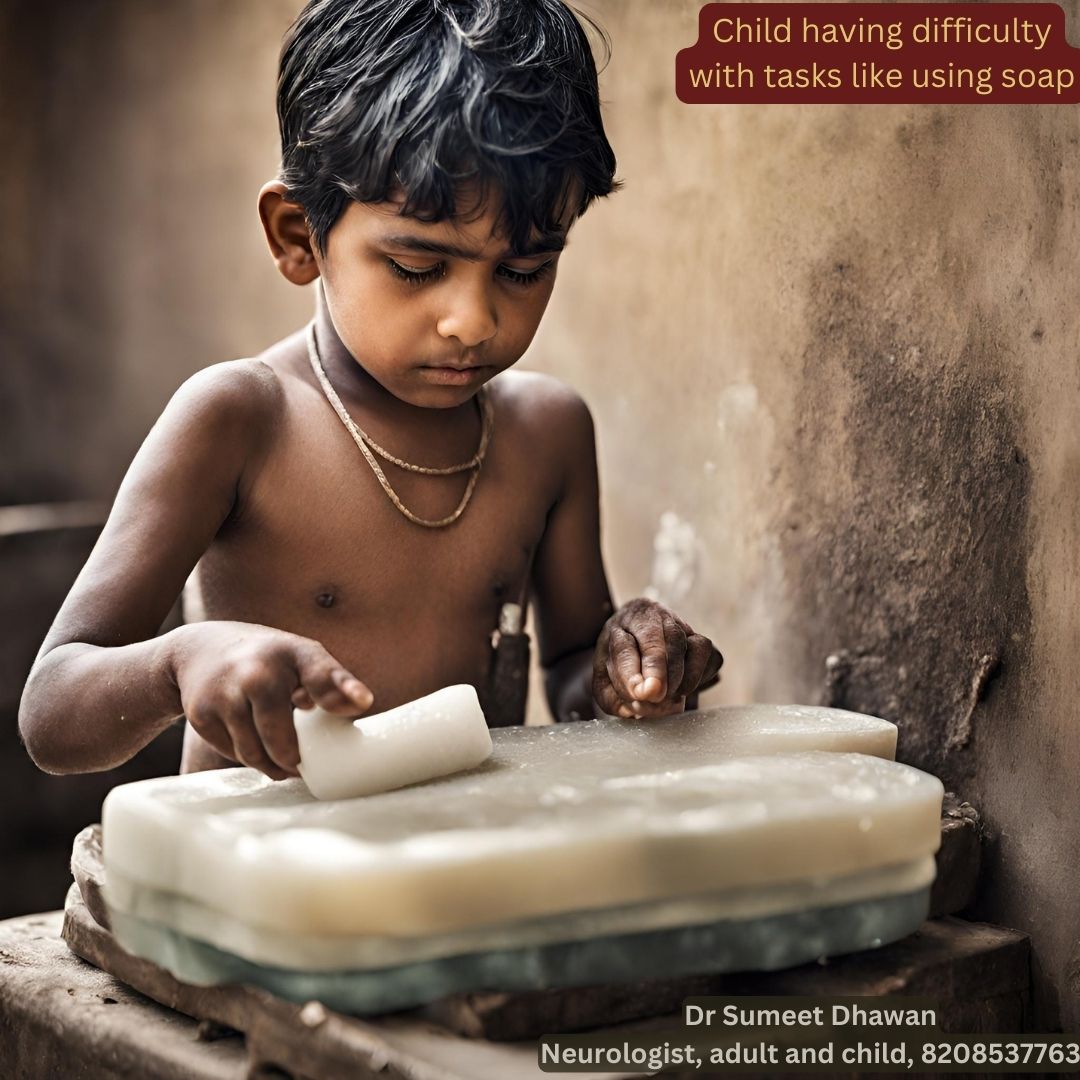
Occupational Therapy Interventions for a Smoother Bath:
Here’s where occupational therapy shines! OTs can assess your child’s individual needs and suggest specific strategies and tools to make bath time more enjoyable and independent. Here are some examples:
Sensory adaptations: Offer calming bath toys, soothing music, or dim lighting to reduce sensory overload. Use bath mitts with different textures or temperature-sensitive bath crayons for sensory exploration.
Fine motor assistance: Provide long-handled bath brushes, adaptive soap dispensers, or built-up washcloths to improve grip and control. Encourage self-feeding with bath paint or edible bath crayons to work on fine motor skills in a fun way.
- Long-handled tools: Introduce long-handled bath brushes, loofahs, or shampoo applicators to increase reach and reduce strain on smaller hands.
- Grip aids: Use non-slip grips on washcloths or handles of bathing tools for improved grasp.
- Adaptive equipment: Explore tools like soap dispensers with push buttons, shampoo shields, or one-handed washcloths for easier management.
Gross motor support:
Use bath chairs, grab bars, or bath lifts for safe and independent transfers. Consider bath mats with non-slip textures or raised surfaces for added stability.
- Seated bathing: Use a shower chair or bath bench to provide stability and support while bathing.
- Transfer assistance: Consider using a transfer board or lift if needed for safe and independent movement in and out of the bathtub.
- Grab bars: Install grab bars near the bathtub and shower for secure maneuvering and balance.
Executive function strategies:
Create visual schedules or picture charts to break down bath steps. Use timers to provide structure and anticipate transitions. Encourage verbal communication and self-advocacy for expressing needs and preferences.
- Visual schedules: Create a visual schedule with pictures or pictograms depicting each step of the bathing routine to promote organization and sequencing.
- Timers: Use a timer to break down the bathing process into manageable chunks, promoting task initiation and completion.
- Positive reinforcement: Celebrate successful completion of individual steps or the entire bathing process to enhance motivation and engagement.
Beyond the Basics:
Occupation therapy goes beyond just adapting tools and routines. It’s about empowering your child to participate actively in their bath time. Here are some additional tips:
Involve your child in the process: Let them choose bath toys, washcloths, and even shampoo scents to increase engagement and ownership.
Make it playful: Turn bath time into a sensory exploration activity, using bath paints, bubbles, or water squirters for fun and learning.
Celebrate progress: Acknowledge and praise even small efforts, like washing their hands or using a bath brush independently.
Seek professional guidance: Consult an occupational therapist for personalized strategies and equipment recommendations tailored to your child’s specific needs and developmental level.
Remember:
Adapting bath time is a journey, not a destination. Be patient, consistent, and celebrate every success along the way. With the help of occupational therapy, you can transform bath time from a challenge into a joyful and empowering experience for your child, fostering independence and building confidence for a lifetime.
Certainly! Here are 10 additional reading website links that provide valuable information on fever in newborns and related topics:
- HealthyChildren.org – Fever in Infants and Children: https://www.healthychildren.org/English/health-issues/conditions/fever/Pages/Fever-in-Infants-and-Children.aspx
- Mayo Clinic – Infant Fever: https://www.mayoclinic.org/healthy-lifestyle/infant-and-toddler-health/expert-answers/infant-fever/faq-20058509
- WebMD – Fever in Babies: https://www.webmd.com/children/fever-in-children
- CDC – Fever and Taking Your Child’s Temperature: https://www.cdc.gov/fever/parents-childfever.html
- American Academy of Pediatrics – What to Do When Your Baby Has a Fever: https://www.healthychildren.org/English/health-issues/conditions/fever/Pages/What-to-Do-When-Your-Baby-Has-a-Fever.aspx
- Stanford Children’s Health – Fever in Infants and Children: https://www.stanfordchildrens.org/en/topic/default?id=fever-in-infants-and-children-90-P02581
- NHS – Fever in Children: https://www.nhs.uk/conditions/fever-in-children/
- Children’s Hospital of Philadelphia – Fever in Infants and Children: https://www.chop.edu/conditions-diseases/fever-infants-and-children
- Parents.com – Fever in Babies and Toddlers: https://www.parents.com/baby/health/fever-in-babies-and-toddlers/
BabyCenter – Fever in Babies: https://www.babycenter.com/baby/fever-in-babies
These resources offer a wealth of information and expert advice to help parents and caregivers understand and manage fever in newborns effectively.